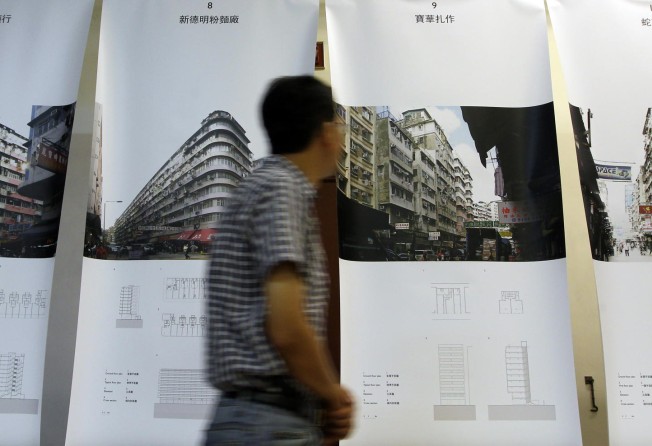Doorways to a time before there were malls
An exhibition takes you into the shops that still survive in some of the city's oldest buildings

Unfurled like great ink paintings, photographs of Sham Shui Po's most long-standing residents, the tong lau, fill the hall. Not people, but the old-style walk-up tenements that are the life and soul of a district best known for cheap electronics and fabric stores.
"A city's vibrancy doesn't come from the new buildings, but the old," said Tony Leung Tun-lim of the Conservancy Association Centre for Heritage, which is hosting the exhibition "Sham Shui Po Tong Lau Shops".
He is paraphrasing Jane Jacobs, the Canadian sociologist whose 1960s critique The Death and Life of Great American Cities condemned how the rich, organised chaos of small neighbourhoods was being replaced by sterile blocks.
Seated on an old bench salvaged from a decommissioned Star Ferry boat, Leung speaks lovingly of the old snake restaurants and family-run bicycle stores, cafes, tea-sellers and bakeries that face being forced out of Sham Shui Po by a hunger for space, which in this city means building upwards.
Leung and the team at CACHe see Hong Kong being turned into an optimal space for shoppers, but not for communities.
With some of the remaining tong laus dating back to the 1920s, Woo Pui-leng, a retired Chinese University architecture professor who curated the show, says how the old shops tell of a different age of consumerism.
"Very often, there isn't a door, the life of the store expands on to the street itself. This doesn't happen in large shopping centres," he says.
Even in Sham Shui Po, adds Leung, the electronics streets are far from the real heart of the community. "Most people don't get to see it," he says.
He talks of Kung Chan Cycle, a shop where cyclists gather to exchange news and where buyers are taught to repair their rides rather than be persuaded to buy the latest model.
There's also the jeweller who invited in a passerby who was peeking through the window at his paintings, and ended up selling HK$300,000 worth of jade. Then there's the celebrated snake restaurant, Shia Wong Hip.
They are businesses that might not survive against the retail giants, or simply wouldn't be allowed into the sanitised world of the shopping mall.
"The restaurant drawers are all full of live snakes. I don't know if you've smelled snakes before, but they smell kind of funny. The malls would never allow it," says Leung. "People should take a chance to visit these shops. The owners really like to talk to you."
The exhibition runs to the end of August at 36A Western Street, Sai Ying Pun.